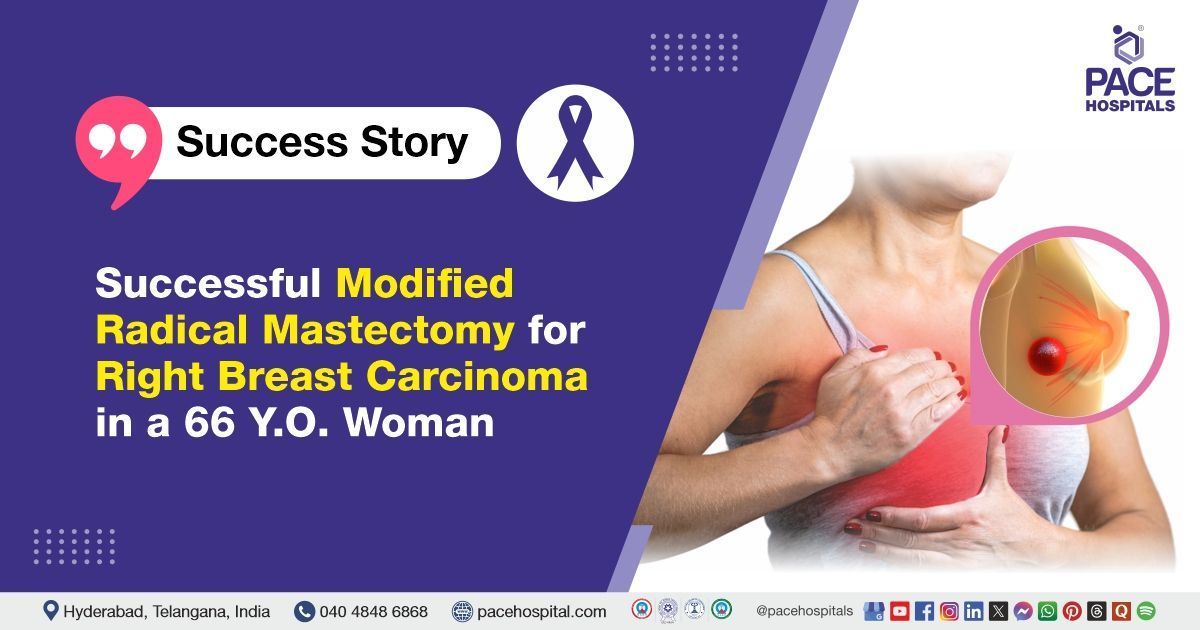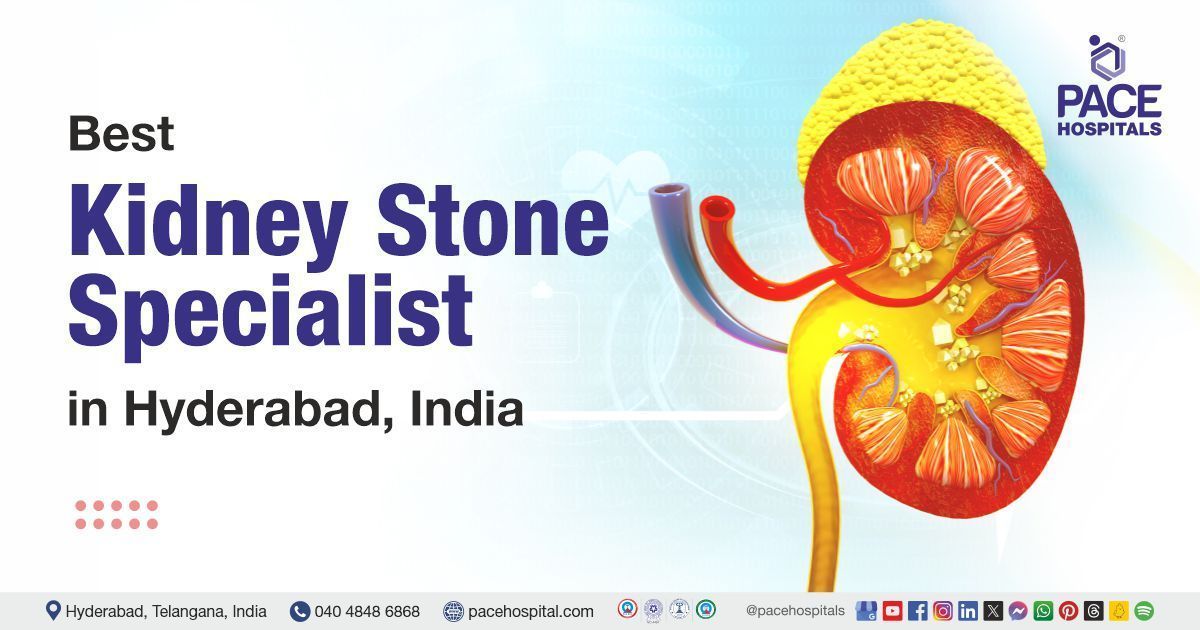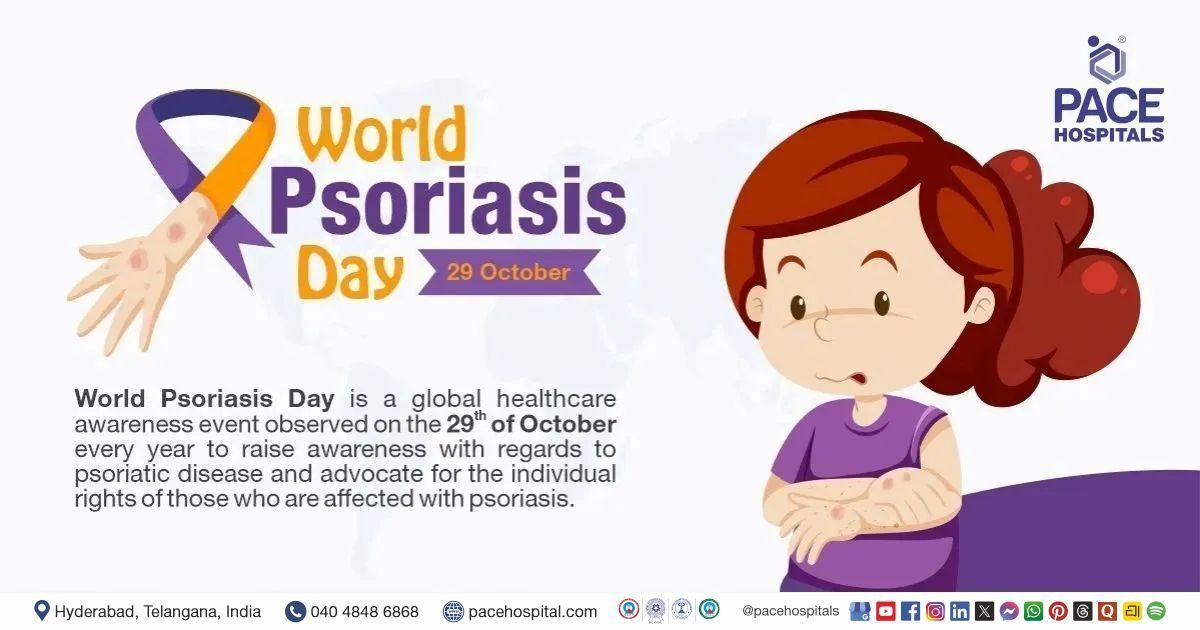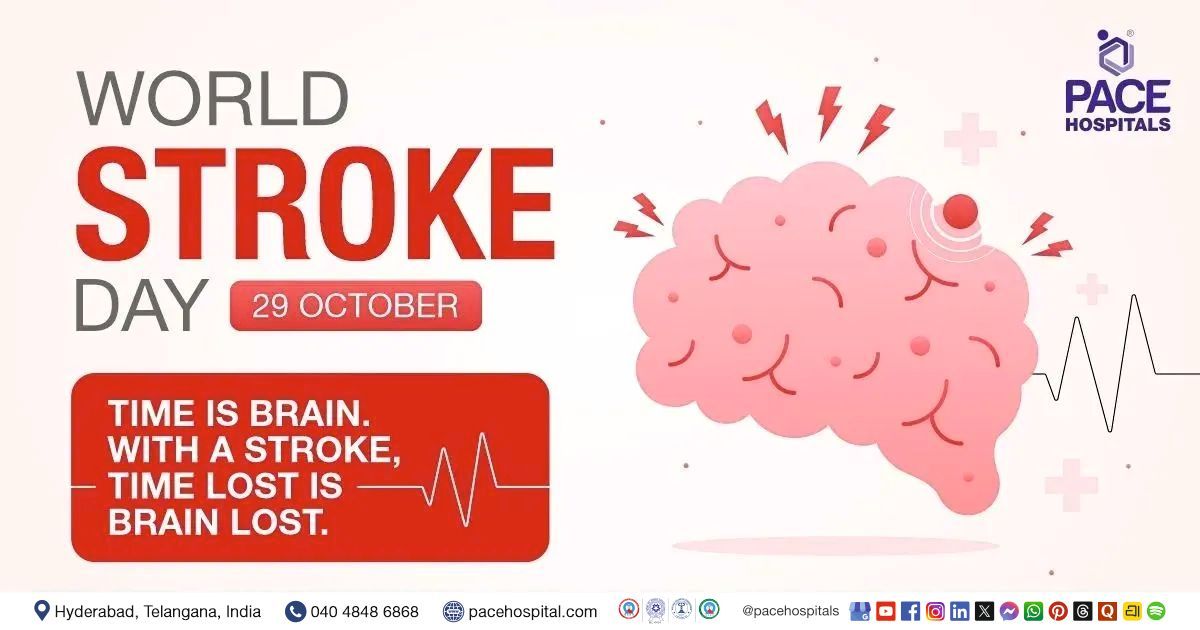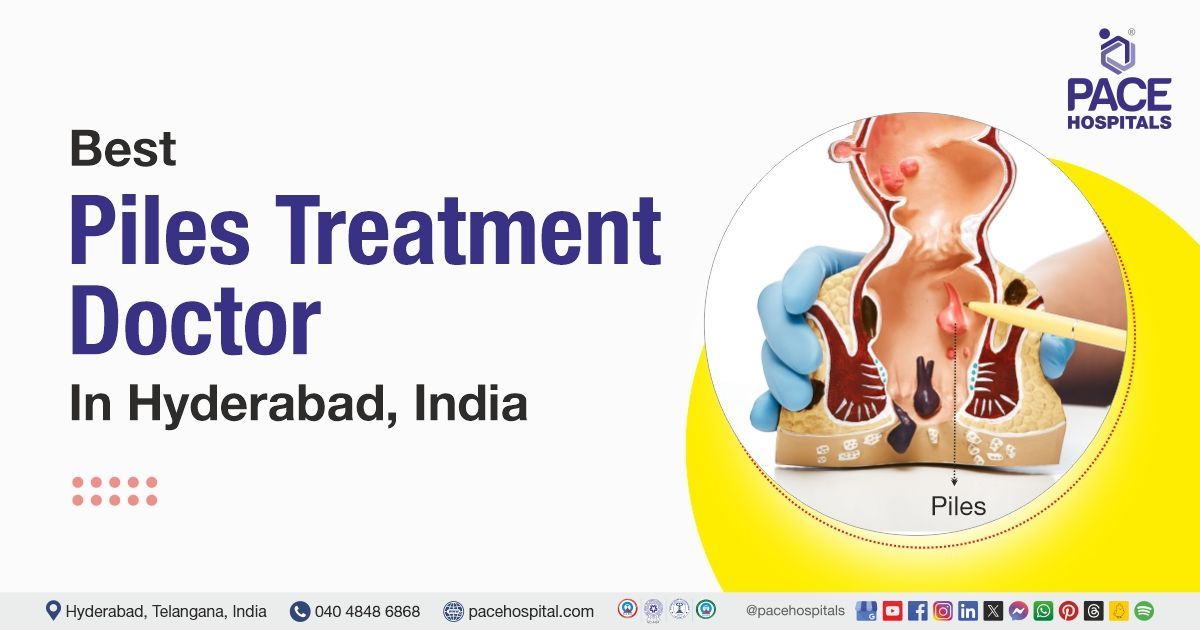Successful Modified Radical Mastectomy for Right Breast Carcinoma in a 66 Y.O. Woman
PACE Hospitals' expert Oncology team successfully performed
a right breast modified radical mastectomy on a 66-year-old female patient who presented with a non-painful lump in her right breast. The surgery was performed to remove the lump in the right breast, effectively relieving the patient's symptoms and improving the overall quality of life.
Chief complaints
A 66-year-old female patient with a
body mass index (BMI) of 24 presented to the Oncology Department at
PACE Hospitals, Hitech City, Hyderabad, with a painless lump in her right breast that had persisted for two months duration, which had begun to interfere with her daily activities.
Past Medical History
The patient had a history of food allergy to brinjal, and no history of chronic medical conditions such as
diabetes,
hypertension, or
cardiovascular disease. The absence of comorbid conditions was considered clinically favourable, as it minimised the risk of intraoperative and postoperative complications and supported a smoother, more stable recovery.
On Examination
Upon admission to PACE hospitals, the patient was hemodynamically stable with normal vital signs. On cardiovascular examination, S1 and S2 heart sounds were present. Central nervous system examination revealed no focal neurological deficits. Respiratory system examination showed bilateral air entry with normal vesicular breath sounds. The abdomen was soft and non-tender.
On local examination of the right breast, a 2 cm lump with vague margins was palpated in the lower inner quadrant. The lump was mobile, not fixed to the skin, and non-tender. Adjacent to this, another small lump was identified. The right axilla was free of any palpable lymph nodes. The left breast and axilla were normal, with no lumps detected.
Diagnosis
After the initial examination, the patient underwent a comprehensive assessment by the oncology team, which included detailed clinical evaluation, laboratory investigations and imaging studies, including:
Imaging Studies
- Mammography: Mammography was performed to evaluate the right breast lump and to detect any associated microcalcifications or architectural distortions.
- Ultrasound: Targeted breast ultrasound was conducted to characterize the lump further, assess its internal features, and guide biopsy if necessary.
- Magnetic Resonance Imaging (MRI): MRI was considered due to the suspicious nature of the lesion and for further characterization using T1- and T2-weighted imaging, especially since T2 hyperintense lesions can be seen in both benign and malignant conditions. MRI helps in delineating lesion morphology, internal signal, and enhancement patterns.
- Core Needle Biopsy: A core needle biopsy of the right breast lump was performed under imaging guidance to obtain tissue for definitive histopathological diagnosis.
- Fine Needle Aspiration Cytology (FNAC): FNAC was considered as an adjunct in cases where rapid diagnosis was needed, although core biopsy remains the gold standard for tissue diagnosis.
These radiographic findings correlated with the patient’s symptoms and confirmed right breast carcinoma staging T2, guiding the team toward planning appropriate surgical intervention.
Based on the comprehensive evaluation, the patient was advised to undergo Breast Lump Treatment in Hyderabad, India, under the expert care of the Oncology Department to ensure complete management of her condition, symptom relief, and prevention of further complications.
Medical Decision-Making
After consulting with Dr. Ramesh Parimi, a surgical oncologist, a comprehensive evaluation was conducted to determine the course of treatment for the patient.
Based on patient symptoms and the diagnostic findings, it was concluded that a right breast modified radical mastectomy would be the most appropriate surgical intervention for treating the breast lumps. The decision was based on a detailed clinical assessment and aimed at ensuring optimal outcomes through timely and definitive management.
The patient and her family were counselled about the patient's condition, including the associated risks, complications, and benefits. They were also informed about the necessity of surgical intervention to prevent future complications and ensure optimal outcomes.
Surgical Procedure
Following the decision, the patient was scheduled to undergo a right breast modified radical mastectomy in Hyderabad at PACE Hospitals under the expert supervision of the Oncology Department.
The following steps were carried out during the procedure:
- Preoperative preparation and anaesthesia: The patient was given general anaesthesia and positioned for optimal access to the right breast.
- Surgical exposure: An elliptical incision was made surrounding the nipple-areolar complex and extending over the tumor site. Skin flaps were then carefully raised above and below the incision to expose the underlying breast tissue.
- Breast Tissue Removal: The breast tissue was dissected free from the pectoral fascia, and the tumor was removed.
- Haemostasis and closure: Haemostasis (bleeding control) was secured, and the wound was closed in layers, with a drain placed, to minimize postoperative complications and promote optimal recovery for the patient.
Postoperative Care
After surgery, the patient's postoperative recovery was uneventful, and she was monitored closely in the surgical intensive care unit to ensure stability. She was transferred to the general ward once her condition had stabilized. During her hospital stay, she received intravenous antibiotics to prevent infection, analgesics for pain relief, antiemetics to control nausea, and gastric protectants.
Discharge Medications
Upon discharge, the patient was prescribed a medication regimen to support postoperative recovery and minimize complications. This regimen included proton pump inhibitors (PPIs) to prevent gastrointestinal irritation and antibiotics to reduce the risk of surgical site infection.
Advice on Discharge
The patient was advised to keep the incision site clean and dry. She was instructed to gently wash the area with plain water using mild soap, then pat it dry. She was reminded to monitor the incision for any signs of infection, such as swelling, warmth, redness, or unusual discharge. The patient was encouraged to resume normal activities gradually; however, she was advised to avoid heavy lifting and strenuous activities for at least 4 to 6 weeks following surgery.
Emergency Care
The patient was informed to contact the emergency ward at PACE Hospitals in case of any emergency or development of symptoms such as fever, sudden onset of arm or shoulder pain or swelling, increased redness, swelling, or discharge from the wound.
Review and Follow-Up
The patient was advised to schedule a follow-up appointment with the Oncologist in Hyderabad at PACE Hospitals one week after discharge.
Conclusion
This case demonstrates the successful management of right breast carcinoma (T2 lesion) through a modified radical mastectomy.
Evidence-Based Management and Patient-Centered Care in Breast Cancer.
A systematic diagnostic methodology, encompassing clinical assessment, tissue biopsy, and sophisticated imaging, is necessary for the precise diagnosis and staging of breast cancer. Evidence-based surgical decision-making, such as choosing modified radical mastectomy for a patient with a T2 breast cancer lesion is based on the tumor's features, the patient's lymph node status, and their preferences. To ensure that each patient's treatment is based on their unique disease profile, striking a balance between safety and quality of life.
Postoperative care that focuses on the patient, with an emphasis on close monitoring and infection control, helps the patient recover and lowers the risk of problems. Providing individualized discharge instructions further facilitates optimal healing. The involvement of an oncologist/cancer specialist ensures comprehensive support and better long-term outcomes.
Ultimately, this comprehensive plan makes patients happier and provides them with a better long-term outlook.
Share on
Request an appointment
Fill in the appointment form or call us instantly to book a confirmed appointment with our super specialist at 04048486868

